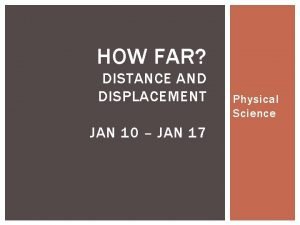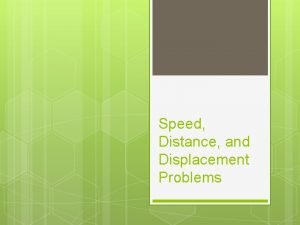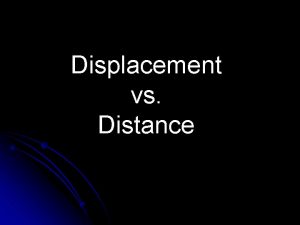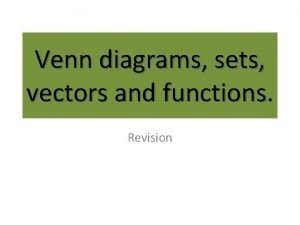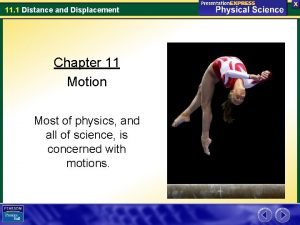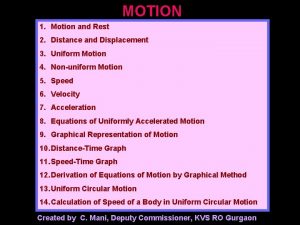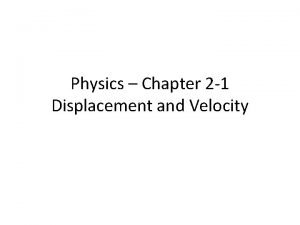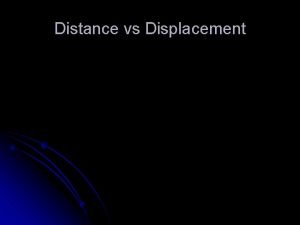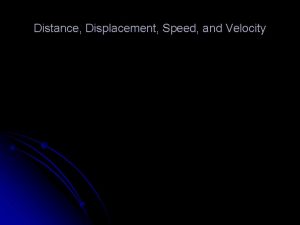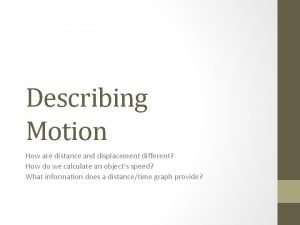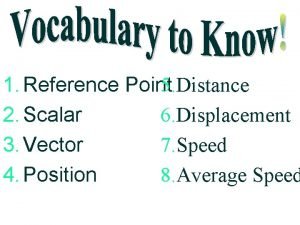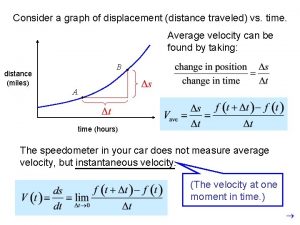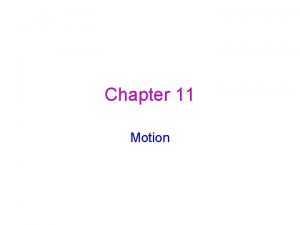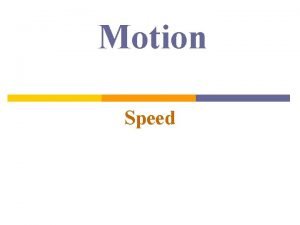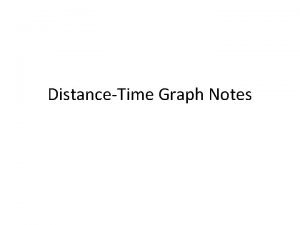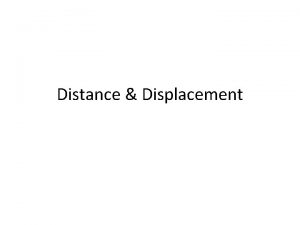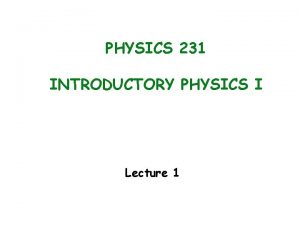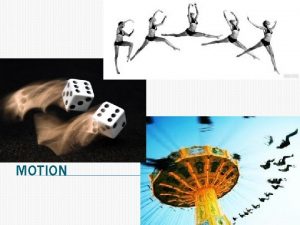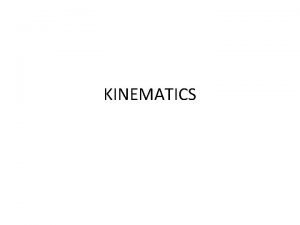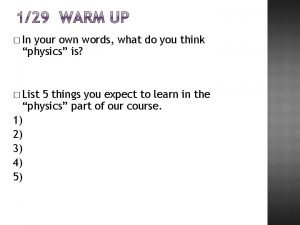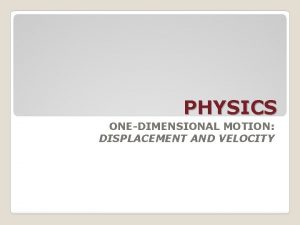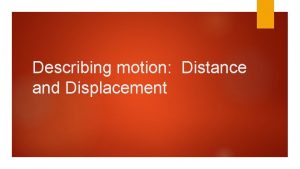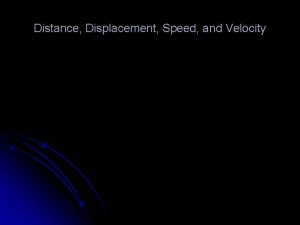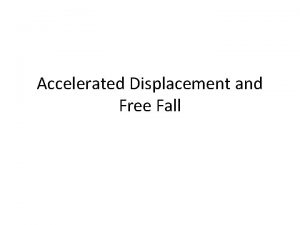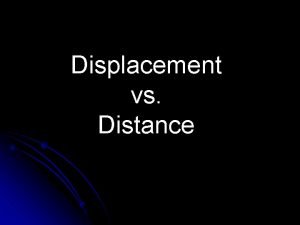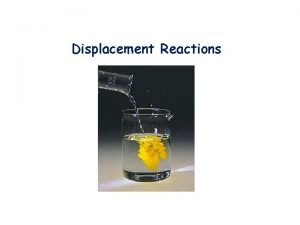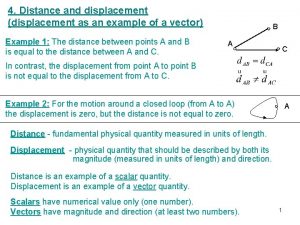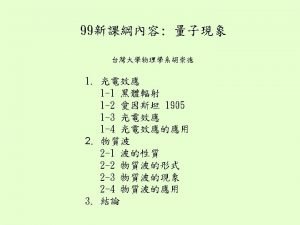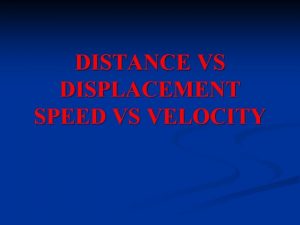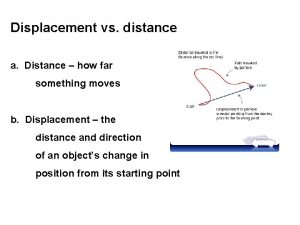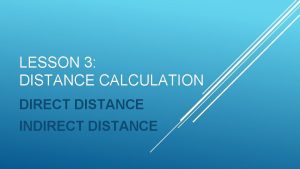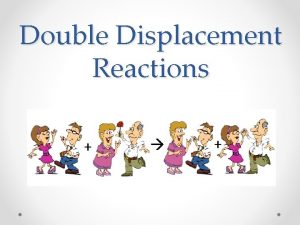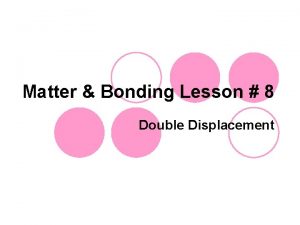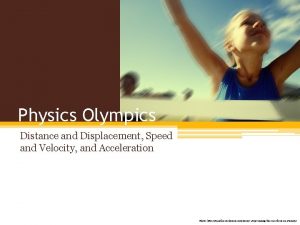PHYSICS 11 TEACHERS NOTES LESSON Distance and Displacement
























- Slides: 24

PHYSICS 11 TEACHER’S NOTES LESSON

Distance and Displacement Section 1. 1 To train for a charity run, you start from your home and jog east for 6. 0 km. At a stop sign, you turn around and jog west for another 3. 5 km. Calculate the total distance that you travelled and your total displacement. Using the arrows and labels below, draw a vector diagram that shows the total displacement. Statement: The total distance travelled is displacement is. , and the total

Discussion: Distance and Displacement Section 1. 1 Is the total distance the same as the total displacement? Why or why not?

Position–Time Graphs Sections 1. 2 and 1. 3 Match each scenario to the correct position-time graph below. A cyclist is travelling south and is slowing down to stop at an intersection. A car is sitting in A cyclist is An elevator is a parking lot 250 travelling south moving steadily m west of a mall. at a steadily from the eighth increasing speed. floor of a building to the main floor.

Velocity and Acceleration Section 1. 3 The diagrams below show a ball moving from left to right in three different motions. Assume motion to the right is positive. In each case, the time interval between each ball is the same. Using the following terms, label the diagrams below. negative acceleration (a) (b) (c) constant velocity positive acceleration

Discussion: Distance and Displacement Section 1. 3 If an object is moving with uniform acceleration in the negative direction, is the object always slowing down?

Creating One Type of Motion Graph from Section 1. 4 Another Use the acceleration–time graph below to calculate the velocity at 0 s, 1 s, 2 s, 3 s, 4 s, 5 s, and 6 s. Then use this information to construct a velocity–time graph on the following slide. velocity-time graph

Creating One Type of Motion Graph from Section 1. 4 Another 50. 0 40. 0 30. 0 20. 0 10. 0 0 1. 0 2. 0 3. 0 4. 0 5. 0 6. 0 t(s) What is the displacement of the object? Click to reveal the answer. The displacement is 135 m [S]. (6. 0 s × 45 m/s) ∕ 2 = 135 m

Five Key Equations for Motion with Uniform Acceleration Section 1. 5 In a uniform acceleration problem, you are given vf , vi , and aav. You need to solve for ∆t. Which equation(s) you can use to solve for ∆t? Equation 1 Equation 2 Equation 3 Equation 4 Equation 5

Uniform Vertical Acceleration Section 1. 6 For your physics class, you drop a ball from a tall building. Complete the table below on a sheet of paper by calculating the distances the ball falls for the first 5 s. Then click the image to play the animation and check your answers. 0 1 2 3 4 5

Discussion: Uniform Vertical Acceleration Section 1. 6 Consider the distance the ball falls. What pattern do you see? Explain the pattern.

Impact of Kinematics Technologies on Society Section 1. 7 Many technologies apply the physics of kinematics. One example is the global positioning system (GPS). Discuss GPS technology as a class. • How does GPS technology work? • List some uses for this technology. • Why do you think there are privacy concerns with GPS technology? • Do you think the benefits of GPS technology outweigh the privacy concerns?

ANSWERS TEACHER’S NOTES LESSON

Distance and Displacement Section 1. 1 To train for a charity run, you start from your home and jog east for 6. 0 km. At a stop sign, you turn around and jog west for another 3. 5 km. Calculate the total distance that you travelled and your total displacement. Using the arrows and labels below, draw a vector diagram that shows the total displacement. = 6. 0 km [E] = 3. 5 km [W] = 6. 0 km + 3. 5 km = 9. 5 km = 6. 0 km [E] + 3. 5 km [W] = 6. 0 km [E] – 3. 5 km [W] = 2. 5 km [E] Statement: The total distance travelled is 9. 5 km , and the total displacement is 2. 5 km [E].

Position–Time Graphs Sections 1. 2 and 1. 3 Match each scenario to the correct position-time graph below. An elevator is moving steadily from the eighth floor of a building to the main floor. A car is sitting in A cyclist is a parking lot 250 travelling south m west of a mall. and is slowing down to stop at an intersection. A cyclist is travelling south at a steadily increasing speed.

Velocity and Acceleration Section 1. 3 The diagrams below show a ball moving from left to right in three different motions. Assume motion to the right is positive. In each case, the time interval between each ball is the same. Using the following terms, label the diagrams below. (a) (b) (c) constant velocity positive velocity negative velocity

Creating One Type of Motion Graph from Section 1. 4 Another 50. 0 40. 0 30. 0 20. 0 10. 0 0 1. 0 2. 0 3. 0 4. 0 5. 0 6. 0 t(s) What is the displacement of the object? Click to reveal the answer. The displacement is 135 m [S]. (6. 0 s × 45 m/s) ∕ 2 = 135 m

Five Key Equations for Motion with Uniform Acceleration Section 1. 5 In a uniform acceleration problem, you are given vf , vi , and aav. You need to solve for ∆t. Which equation(s) you can use to solve for ∆t? Equation 1 Equation 2 Equation 3 Equation 4 Equation 5 ✔

Section 1. 6 Uniform Vertical Acceleration For your physics class, you drop a ball from a tall building. Complete the table below on a sheet of paper by calculating the distances the ball falls for the first 5 s. Then click the image to play the animation and check your answers. 0 = (9. 8 m/s 2) (0 s)2 = 0 1 = (9. 8 m/s 2) (1 s)2 = 4. 9 2 = (9. 8 m/s 2) (2 s)2 = 19. 6 3 = (9. 8 m/s 2) (3 s)2 = 44. 1 4 = (9. 8 m/s 2) (4 s)2 = 78. 4 5 = (9. 8 m/s 2) (5 s)2 = 122. 5

Impact of Kinematics Technologies on Society Section 1. 7 Suggested answers/discussion points: The GPS satellite system works by sending and receiving EM radiation. It uses the time it takes for a signal to travel and return to determine distances. Some uses for GPS technology include: increased accuracy in mapping and surveying, navigation, monitoring earthquakes, and tracking the movement of oil spills and forest fires. GPS technology can also monitor your location while hiking, driving, running, etc. It can even determine the length of time someone was in a car, how fast the car was driven, for how long, etc. Privacy concerns exist partly because GPS can be used to track individuals without their knowledge.

Answers for Discussion Questions: Section 1. 1 Slide 5 Sample answer: No, the total distance is not the same as the total displacement. Distance has only size (magnitude), while displacement has both magnitude and direction.

Answers for Discussion Questions: Section 1. 3 Slide 8 Sample answer: It isn’t always the case that the object is slowing down. If an object is moving in the negative direction and the object’s acceleration is also in the negative direction, then the object would be speeding up.

Answers for Discussion Questions: Section 1. 6 Slide 13 For every equal interval of time, the distance the ball falls increases. As the ball falls toward Earth, its speed is increasing. Since the distance travelled increases for each successive increment of time, then the ball must be gaining speed (accelerating) as it falls.

Credits slide 10 © NASA
 What is the difference between distance and displacement
What is the difference between distance and displacement Single displacement vs double displacement
Single displacement vs double displacement John drove south 120 km at 60 km/h
John drove south 120 km at 60 km/h Distance vs displacement
Distance vs displacement Distance and displacement venn diagram
Distance and displacement venn diagram Chapter 11 distance and displacement
Chapter 11 distance and displacement Graphical representation of motion
Graphical representation of motion Distance and displacement examples
Distance and displacement examples Kim kroll teachers pay teachers
Kim kroll teachers pay teachers Displacement formula distance
Displacement formula distance Displacement vs distance
Displacement vs distance Distance vs displacement
Distance vs displacement How is distance different from displacement
How is distance different from displacement Distance vs displacement symbol
Distance vs displacement symbol Displacement is distance combined with
Displacement is distance combined with Displacement vs distance traveled
Displacement vs distance traveled Displacement is distance combined with
Displacement is distance combined with Distance vs displacement
Distance vs displacement Distancetime graph
Distancetime graph Distance is a scalar
Distance is a scalar Distance vs. displacement
Distance vs. displacement Distance vs. displacement
Distance vs. displacement Distance vs displacement
Distance vs displacement Google image reverse search
Google image reverse search Physics displacement formula
Physics displacement formula
